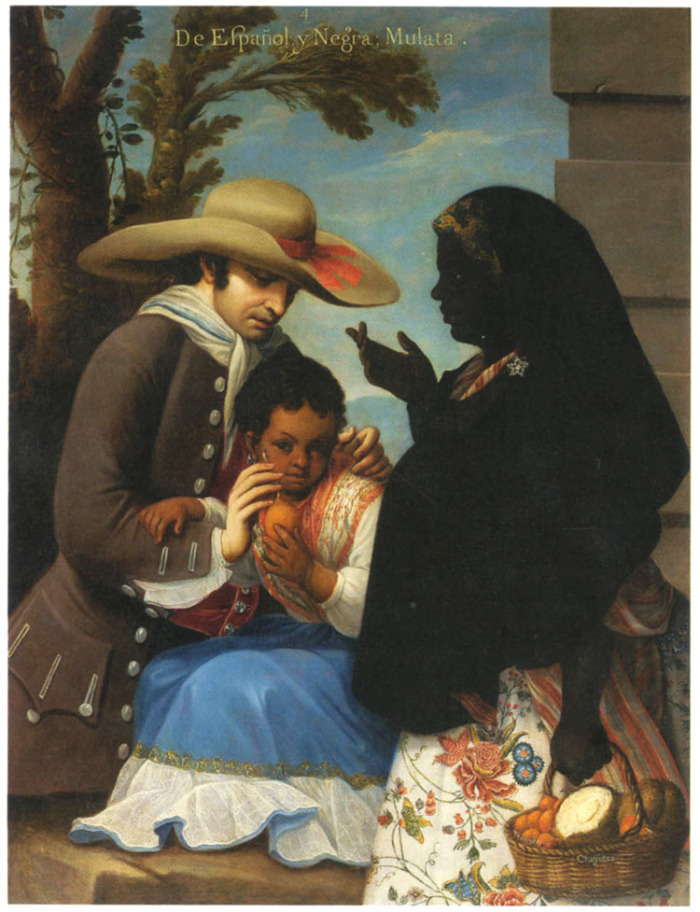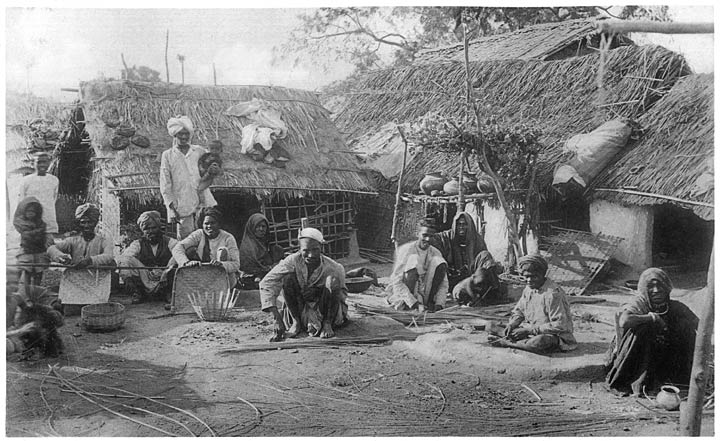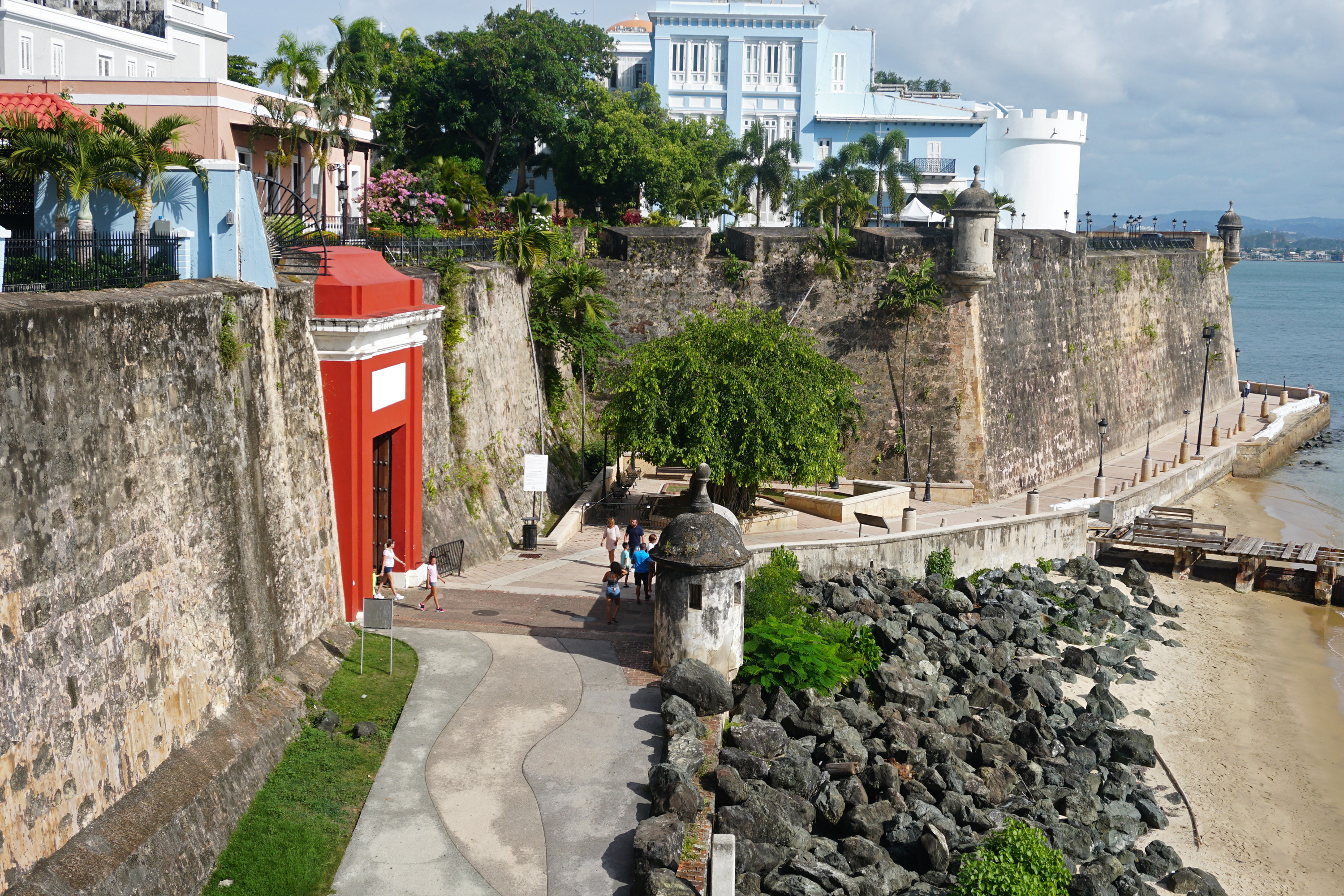|
Georges Biassou
George Biassou (1 January 1741 – 14 July 1801) was an early leader of the 1791 slave rising in Saint-Domingue that began the Haitian Revolution. With Jean-François and Jeannot, he was prophesied by the vodou priest Dutty Boukman to lead the revolution. Like some other slave leaders, he fought with the Spanish royalists against the French Revolutionary authorities in colonial Haiti. Defeated by his former ally Toussaint Louverture, who had allied with the French after they promised to free the slaves, Biassou remained in service to the Spanish Crown. He withdrew from Santo Domingo in 1795 and moved with his family to Florida, which was then part of the Spanish colony of Cuba. In Florida, Biassou changed his first name to Jorge. Spanish leaders put him in charge of the black militia in Florida. He began to build alliances there when his brother-in-law married a fugitive from South Carolina. Florida had provided refuge for both planters and slaves during the American Revolut ... [...More Info...] [...Related Items...] OR: [Wikipedia] [Google] [Baidu] |
Saint-Domingue
Saint-Domingue () was a French colonization of the Americas, French colony in the western portion of the Caribbean island of Hispaniola, in the area of modern-day Haiti, from 1659 to 1803. The name derives from the Spanish main city on the island, Santo Domingo, which came to refer specifically to the Spanish-held Captaincy General of Santo Domingo, now the Dominican Republic. The borders between the two were fluid and changed over time until they were finally solidified in the Dominican War of Independence in 1844. The French had established themselves on the western portion of the islands of Hispaniola and Tortuga (Haiti), Tortuga thanks to the Devastations of Osorio. In the Treaty of Ryswick of 1697, Spain formally recognized French control of Tortuga Island and the western third of the island of Hispaniola. In 1791, slaves and some Saint-Domingue Creoles, Creoles took part in a Haitian Vodou, Vodou ceremony at Bois Caïman and planned the Haitian Revolution. The slave rebe ... [...More Info...] [...Related Items...] OR: [Wikipedia] [Google] [Baidu] |
First Empire Of Haiti
The First Empire of Haiti, officially known as the Empire of Haiti (; ), was an elective monarchy in North America. Haiti was controlled by France before declaring independence on 1 January 1804. The Governor-General of Haiti, Jean-Jacques Dessalines, created the empire on 22 September 1804. After being proclaimed emperor by the Generals of the Haitian Revolution Army, he held his coronation ceremony on 6 October and took the name Jacques I. The constitution of 20 May 1805 set out the way the empire was to be governed, with the country split into six military divisions. The general of each division corresponded directly with the emperor or the general in chief appointed by the emperor. The constitution also set out the succession to the throne, with the crown being elective and the reigning emperor having the power to appoint his successor. The constitution also banned white people, with the exception of naturalised Germans and Poles, from owning property inside the empire. Ja ... [...More Info...] [...Related Items...] OR: [Wikipedia] [Google] [Baidu] |
Affranchi
''Affranchi'' (, ) is a former French legal term denoting a freedman or emancipated slave, but also a pejorative term for free people of color. It is used in the English language to describe the social class of freedmen in Saint-Domingue, and other slave-holding French territories, who held legal rights intermediate between those of free whites and enslaved Africans. In Saint-Domingue, roughly half of the ''affranchis'' were '' gens de couleur libres'' (free people of color; ''Mulatto'') and the other half African slaves. The term is derived from the French word for emancipation—, or enfranchisement in terms of political rights. But, the ''affranchis'' were barred from the franchise (voting) prior to a 1791 court case, which followed the French Revolution. The decision in their favor prompted a backlash from the French white planter class on Saint-Domingue, who also exerted power in France. These elements contributed to the outbreak of the Haitian Revolution. The ''affranc ... [...More Info...] [...Related Items...] OR: [Wikipedia] [Google] [Baidu] |
Mulatto
( , ) is a Race (human categorization), racial classification that refers to people of mixed Sub-Saharan African, African and Ethnic groups in Europe, European ancestry only. When speaking or writing about a singular woman in English, the word is (). The use of this term began in the United States shortly after the Atlantic slave trade began and its use was widespread, derogatory and disrespectful. After the post Civil Rights Era, the term is now considered to be both outdated and offensive in the United States. In other Anglophone countries (the English-speaking world) such as English and Dutch-speaking West Indian countries, the word mulatto is still used. Countries with the highest percentages of persons who have equally high European and African ancestry — ''Mulatto'' — are the Dominican Republic (74%) and Cape Verde (71%). Mulattos in many Latin American countries, aside from predominately European and African ancestry, usually also have slight indigenous ad ... [...More Info...] [...Related Items...] OR: [Wikipedia] [Google] [Baidu] |
Caste
A caste is a Essentialism, fixed social group into which an individual is born within a particular system of social stratification: a caste system. Within such a system, individuals are expected to marry exclusively within the same caste (endogamy), follow lifestyles often linked to a particular occupation, hold a ritual status observed within a hierarchy, and interact with others based on cultural notions of social exclusion, exclusion, with certain castes considered as either more pure or more polluted than others. The term "caste" is also applied to morphological groupings in eusocial insects such as ants, bees, and termites#caste, termites. The paradigmatic ethnographic example of caste is the division of India's Hinduism, Hindu society into rigid social groups. Its roots lie in South Asia's ancient history and it still exists; however, the economic significance of the caste system in India seems to be declining as a result of urbanisation and affirmative action programs. ... [...More Info...] [...Related Items...] OR: [Wikipedia] [Google] [Baidu] |
Cap-Haïtien
Cap-Haïtien (; ; "Haitian Cape") is a List of communes of Haiti, commune of about 400,000 people on the north coast of Haiti and capital of the Departments of Haiti, department of Nord (Haitian department), Nord. Previously named ''Cap‑Français'' (; initially ''Cap-François'' ) and ''Cap‑Henri'' () during the rule of Henri Christophe, Henri I, it was historically nicknamed the ''Paris of the Antilles'', because of its wealth and sophistication, expressed through its architecture and artistic life. It was an important city during the colonial period, serving as the capital of the French Colony of Saint-Domingue from the city's formal foundation in 1711 until 1770 when the capital was moved to Port-au-Prince. After the Haitian Revolution, it became the capital of the Kingdom of Haiti under King Henri I until 1820. Cap-Haïtien's long history of independent thought was formed in part by its relative distance from Port-au-Prince, the barrier of mountains between it and the so ... [...More Info...] [...Related Items...] OR: [Wikipedia] [Google] [Baidu] |
French Colonial Empire
The French colonial empire () comprised the overseas Colony, colonies, protectorates, and League of Nations mandate, mandate territories that came under French rule from the 16th century onward. A distinction is generally made between the "First French colonial empire", that existed until 1814, by which time most of it had been lost or sold, and the "Second French colonial empire", which began with the French conquest of Algeria, conquest of Algiers in 1830. On the eve of World War I, France's colonial empire was List of largest empires, the second-largest in the world after the British Empire. France began to establish colonies in the French colonization of the Americas, Americas, the Caribbean, and French India, India in the 16th century but lost most of its possessions after its defeat in the Seven Years' War. The North American possessions were lost to Britain and Spain, but Louisiana (New France), Spain later returned Louisiana to France in 1800. The territory was then Loui ... [...More Info...] [...Related Items...] OR: [Wikipedia] [Google] [Baidu] |
West Indies
The West Indies is an island subregion of the Americas, surrounded by the Atlantic Ocean, North Atlantic Ocean and the Caribbean Sea, which comprises 13 independent island country, island countries and 19 dependent territory, dependencies in three archipelagos: the Greater Antilles, the Lesser Antilles, and the Lucayan Archipelago. The subregion includes all the islands in the Antilles, in addition to The Bahamas and the Turks and Caicos Islands, which are in the Atlantic Ocean, North Atlantic Ocean. The term is often interchangeable with "Caribbean", although the latter may also include coastal regions of Central America, Central and South American mainland nations, including Mexico, Belize, Honduras, Panama, Colombia, Venezuela, French Guiana, Guyana, and Suriname, as well as the Atlantic Ocean, Atlantic island nation of Bermuda, all of which are geographically distinct from the three main island groups, but culturally related. Terminology The English term ''Indie'' is deri ... [...More Info...] [...Related Items...] OR: [Wikipedia] [Google] [Baidu] |
Caribbean Sea
The Caribbean Sea is a sea of the Atlantic Ocean, North Atlantic Ocean in the tropics of the Western Hemisphere, located south of the Gulf of Mexico and southwest of the Sargasso Sea. It is bounded by the Greater Antilles to the north from Cuba to Puerto Rico, the Lesser Antilles to the east from the Virgin Islands to Trinidad and Tobago, South America to the south from the Venezuela, Venezuelan coastline to the Colombia, Colombian coastline, and Central America and the Yucatán Peninsula to the west from Panama to Mexico. The Geopolitics, geopolitical region around the Caribbean Sea, including the numerous islands of the West Indies and adjacent coastal areas in the mainland of the Americas, is known as the Caribbean. The Caribbean Sea is one of the largest seas on Earth and has an area of about . The sea's deepest point is the Cayman Trough, between the Cayman Islands and Jamaica, at below sea level. The Caribbean coastline has many gulfs and bays: the Gulf of Gonâve, the Gul ... [...More Info...] [...Related Items...] OR: [Wikipedia] [Google] [Baidu] |
Greater Antilles
The Greater Antilles is a grouping of the larger islands in the Caribbean Sea, including Cuba, Hispaniola, Puerto Rico, and Jamaica, together with Navassa Island and the Cayman Islands. Seven island states share the region of the Greater Antilles, with Haiti and the Dominican Republic sharing the island of Hispaniola. Together with the Lesser Antilles, they make up the Antilles, which along with the Lucayan Archipelago, form the West Indies in the Caribbean region of the Americas. While most of the Greater Antilles consists of independent countries, Puerto Rico and Navassa Island are Territories of the United States, unincorporated territories of the United States, while the Cayman Islands are a British Overseas Territories, British Overseas Territory. The largest island is Cuba, which extends to the western end of the island group. Puerto Rico lies on the eastern end, and the island of Hispaniola, the most populated island, is located in the middle. Jamaica lies to the south of ... [...More Info...] [...Related Items...] OR: [Wikipedia] [Google] [Baidu] |
Dominican Republic
The Dominican Republic is a country located on the island of Hispaniola in the Greater Antilles of the Caribbean Sea in the Atlantic Ocean, North Atlantic Ocean. It shares a Maritime boundary, maritime border with Puerto Rico to the east and a Dominican Republic–Haiti border, land border with Haiti to the west, occupying the Geography of the Dominican Republic, eastern five-eighths of Hispaniola which, along with Saint Martin (island), Saint Martin, is one of only two islands in the Caribbean shared by two sovereign states. In the Antilles, the country is the List of Caribbean islands by area, second-largest nation by area after Cuba at and List of Caribbean countries by population, second-largest by population after Haiti with approximately 11.4 million people in 2024, of whom 3.6 million reside in the Greater Santo Domingo, metropolitan area of Santo Domingo, the capital city. The native Taíno people had inhabited Hispaniola prior to European colonization of the America ... [...More Info...] [...Related Items...] OR: [Wikipedia] [Google] [Baidu] |
Duvalier Dynasty
The Duvalier family (French language, French: ''Dynastie des Duvalier''; Haitian Creole: ''Dinasti Duvalier'') was an Autocracy, autocratic hereditary dictatorship in Haiti that lasted almost 29 years, from 1957 until 1986, spanning the rule of the father-and-son duo François Duvalier ("Papa Doc") and Jean-Claude Duvalier ("Baby Doc"). History Direct elections, the first in Haiti's history, 1950 Haitian general election, were held in October 1950, and Paul Magloire, an elite black Colonel in the Armed Forces of Haiti, military, was elected. Hurricane Hazel hit the island in 1954, devastating the nation's infrastructure and economy. Hurricane relief was inadequately distributed and misspent, and Magloire jailed opponents and shut down newspapers. After he refused to step down after his term ended, a general strike shut down Port-au-Prince's economy, and Magloire fled, leaving the government in a state of chaos. When elections 1957 Haitian general election, were finally held in Se ... [...More Info...] [...Related Items...] OR: [Wikipedia] [Google] [Baidu] |






